Whyalla jobseekers visit regional city in plans for a long-term move
Whyalla is facing a jobs boom fuelled by an expansion of its steelworks, a new high school and solar energy. Now migrants are eyeing off the Steel City in the hope of finding a job and a new life.
Upper Spencer Gulf
Don't miss out on the headlines from Upper Spencer Gulf. Followed categories will be added to My News.
- My story: Migrants of SA
- What you get as a subscriber to The Upper Spencer Gulf News
- Visit the new Upper Spencer Gulf News website
It’s a Sunday at the Whyalla Tourist Information Centre and about 60 jobseekers are in the Steel City for what they hope will be a life-changing visit.
The group is a mix of solo travellers and couples, young and middle-aged, with a diversity of experience from living in countries including Afghanistan, Syria, Iraq, Bhutan, Myanmar, the Congo and Ethiopia.
They are guests of a new collective that is eager to attract migrant workers to the Eyre Peninsula city, which is facing a jobs boom fuelled by an expansion of its steelworks, a new high school and solar energy projects.
The collective includes Whyalla Council, local businesses, Regional Development Australia, the University of South Australia, Whyalla Aged Care and the city’s tourism association.
After a lunch of sandwiches, the group begins its tour of the city and is told of the future jobs in engineering, technology, agriculture and a new solar farm that will need up to 600 workers during construction. Natasha Gunesekara, 24, graduated from a nursing degree at Uni SA last year.
After hearing about Whyalla and its shortage of nurses, aged-care and disability workers, Ms Gunesekara signed up to tour of the city in October.
A Sri Lankan national, she moved to Adelaide in 2016 to study.
But Ms Gunesekara says, like many international students, she cannot even get a job interview in Adelaide.
“Most places ask for experience, so it’s quite hard for graduates,” she says.
“I’m also on a working visa, which also limits my opportunities because they either ask for permanent residency or citizenship.
“I’m keen to move if I have to. Whyalla is quite a beautiful little town and I like the work-life balance that they talk about.”
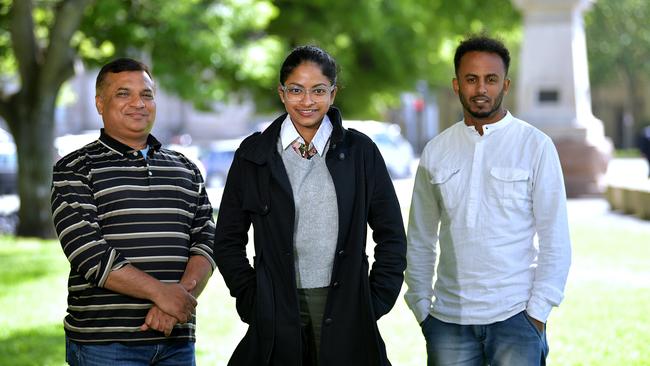
Regional Development Australia’s David Penfolds says providing jobs for Whyalla residents is a priority but the city will need to grow its population to meet its workforce demand.
“We have bigger projects coming through like the new $100 million high school that will start construction in March,” he says.
“Again, a whole raft of more skilled workers and trades we just don’t have.”
As evening descends, the migrants eat dinner at the Foreshore Motor Inn.
The Whyalla Mt Laura Lions Club has cooked up a barbecue feast with meat donated from local and Adelaide butchers.
Well-fed, the jobseekers settle in for the night at several of the city’s accommodation providers, who each donated rooms as part of the visit.
Foreshore Motor Inn owner Barbara Derham says the whole city is rallying together to encourage families to settle in Whyalla.
“Ten people (on the visit) would have come up to me and said they want to relocate,” she says.
“The government of the day should look on this as a pilot scheme and a way of getting people to the regions.
“It’s cost the visitors absolutely nothing.”
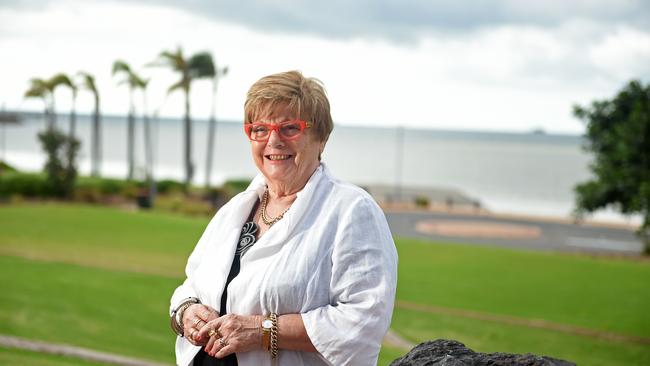
Muhammad Irfan, 46, arrived in Adelaide from Pakistan in August with his wife and three sons.
After settling in Wayville, the journalist of 16 years has struggled to find a media or communications job and now volunteers at ECH Aged Care.
He becomes emotional talking about the courtesy and hospitality on show during his visit to Whyalla.
“The friendliness of the people of Whyalla I have experienced, I never ever had before,” Mr Irfan says.
“This is the beauty and the strength of the Australian concept.
“If I got any opportunity, I will certainly move.”
His wife, a teacher, volunteers at Plympton International College.
The family moved to Adelaide for a better lifestyle and to give their children a better future.
But Mr Irfan says without a job it is “getting tougher and tougher” to pay the bills.
“When I came here I rented a place,” he says.
“I spent money, I bought the car, I bought the appliances and furniture.
“I spend my savings, I am contributing to the Australian economy.
“I’m not demanding a white-collar job … I’m not asking for Centrelink or for charity. I am requesting a job. Any kind of job.”
The next morning, representatives from Whyalla’s major employers, including steelworks owners GFG Alliance, the city’s hospital, university and TAFE campuses, address the jobseekers.
A GFG Alliance spokesman tells them there is a “bright future” for many industries across the region and opportunities for skilled workers will continue to grow.
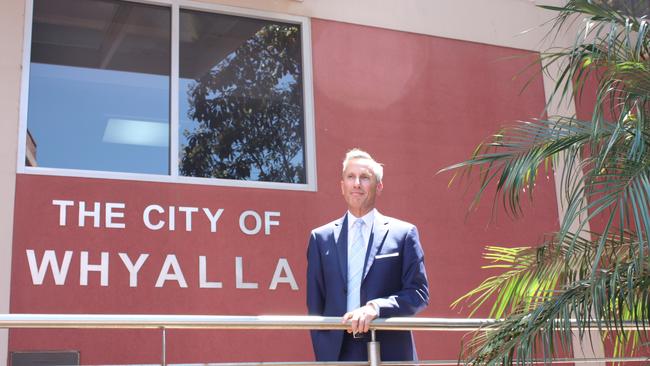
After a tour of the steelworks, the group heads to the Eyre High School, where TAFE students cook them lunch, before visiting the TAFE and university campuses.
Paul Havelberg, regional manager of Uni SA’s Whyalla campus, says 100 per cent of its graduates in teaching, nursing and social work find employment because there is such a high demand in the region.
A number of the migrants he talks to are considering studying for the first time or doing a postgraduate degree.
“Whyalla is really primed and ready to embrace this type of project and bringing people to the region from diverse backgrounds and circumstances,” he says.
“The community is really up for it and wants to support that.”
Selim Salih Osman, 28, is on a humanitarian visa from Eritrea in East Africa.
He has tertiary qualifications in surveying, design and drafting and has applied for more than 30 jobs since arriving in Adelaide three months ago.
He believes Whyalla would be good for a newcomer.
“People were welcoming, which was good, and everything is near to you because all the facilities are available,” he says.
“I’m thinking of studying a Bachelor of Nursing.
“If I get an opportunity I will move because I will study at the same time that I work.”
Australian Migrant Resource Centre chief executive Eugenia Tsoulis says the concept of taking migrants on a tour of Whyalla is simple.
“Whyalla needs workers and refugees need work,” she says.
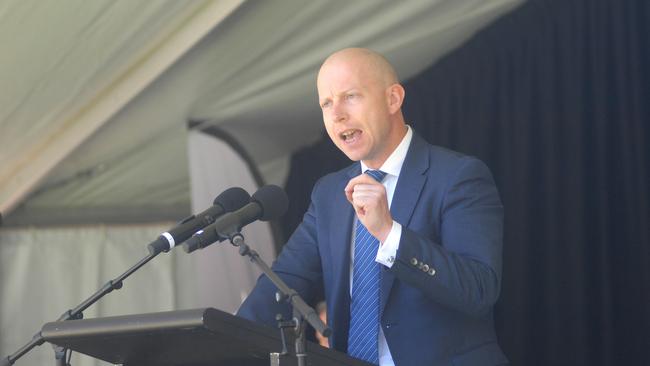
Whyalla Council chief executive Chris Cowley says he visited the Adelaide Multicultural Centre in July to host a “Living and Working in Whyalla Expo”.
Tucked away in a small street off Adelaide’s bustling Central Market District, almost 200 people came out in search of a more prosperous future and many signed up to join the tour of Whyalla.
“One of the biggest risks is the lack of people to fill all the jobs that are going to be created,” he says.
“Even with full local buy in to all the job opportunities, we are still going to be short.”
Mr Cowley is the first to admit that “secondary migration” – attracting skilled migrants who have settled in Adelaide but are looking for opportunities in other parts of the state that better suit their experience – has not been on the council’s radar until now.
“Once we had taken that first step, I can’t believe we hadn’t explored this sooner,” Mr Cowley says.
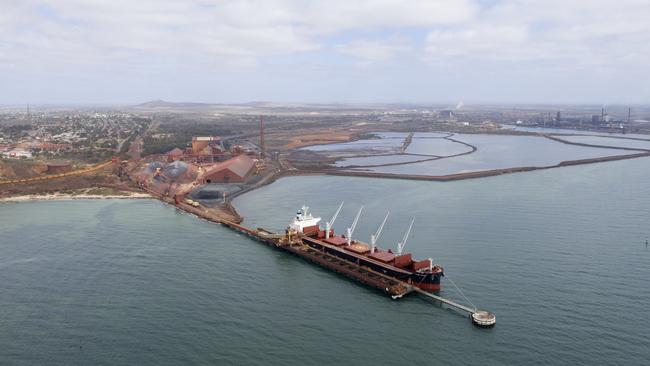
Benjamin Johnson, 45, is also looking to take the next step in his career after emigrating from Liberia, in West Africa, in 2003.
He is now an Australian citizen living in Munno Para, in Adelaide’s northern suburbs, and works in the information technology sector.
He says the visit to Whyalla and the welcoming reception from its community has encouraged him to considering moving there.
“Everyone was just together to make sure that the entire program went well,” he says.
“They have so many things here, university, TAFE, hospitals.”
The team behind the program to encourage skilled migrants to relocate to Whyalla hopes to help people make the move by Christmas.

